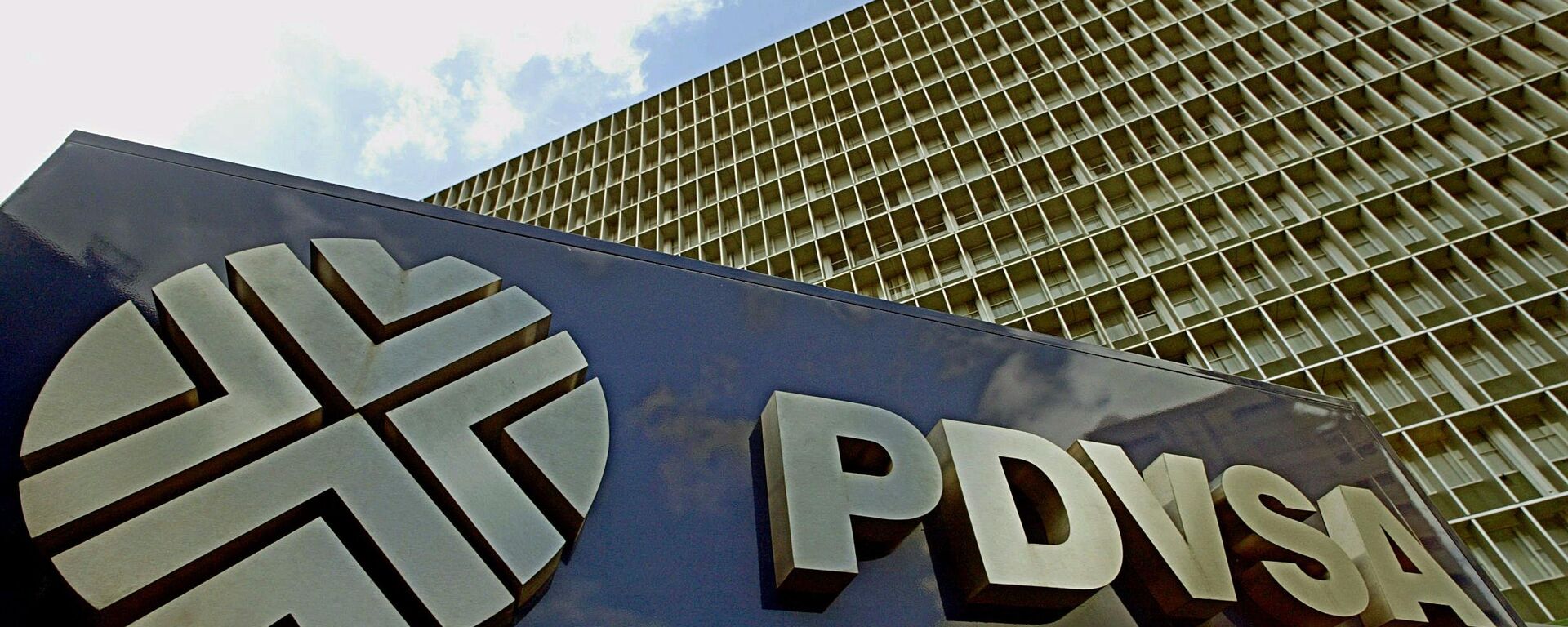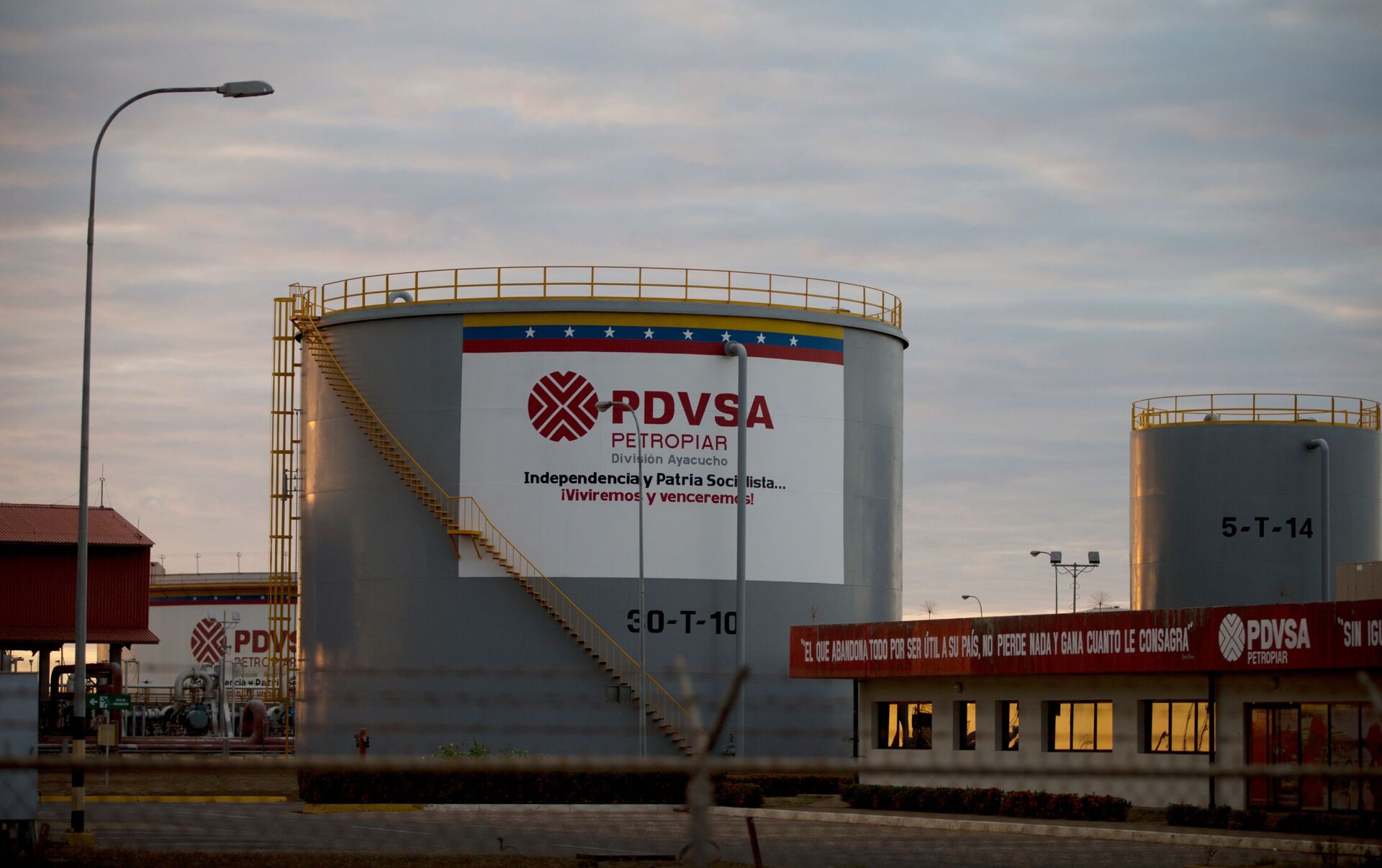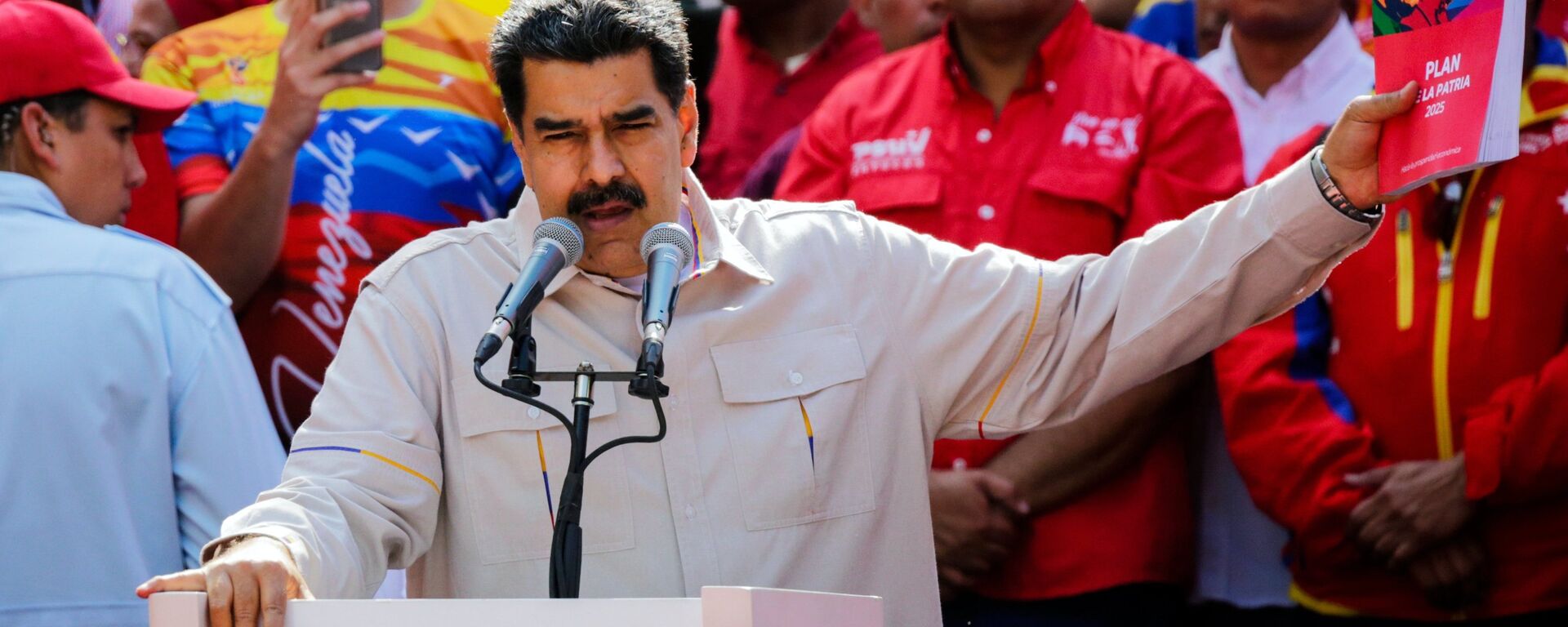Venezuela Pumps Over 1 Mln Barrels of Crude Daily in Late 2021 Despite ‘Criminal Blockade’ By US
11:33 GMT 03.01.2022 (Updated: 14:20 GMT 15.11.2022)
Subscribe
According to the government of Nicolas Maduro, Venezuela has embarked upon a phase of economic recovery through the diversification of production and the rehabilitation of its petroleum activity. This comes in defiance of crippling economic sanctions introduced by the US, which target the state's access to global energy and capital markets.
Venezuela’s state-owned oil company Petroleos de Venezuela (PDVSA) has almost doubled its oil production from last year’s decades-low.
PDVSA pumped an average of 824,000 barrels daily for November 2021, according to OPEC’s December 2021 Monthly Oil Market Report.
OPEC’s Monthly Oil Market Report for December 2021 is now available online. #OPEC #MOMR
— OPEC (@OPECSecretariat) December 13, 2021
▶️https://t.co/4HXBC0VKAM pic.twitter.com/1jE2kAEGQ5
This figure is nearly double the 434,000 barrels daily produced for the same period a year earlier. For the first week of last December, PDVSA announced it had pumped an average of 930,000 barrels per day.
This boost in production was reached despite the crippling sanctions the US government has imposed on the South American country, said the country's Oil Minister Tareck El Aissami in a Christmas message.
Sanctions were imposed against the country’s democratically elected socialist government in the wake of Venezuela's 2018 presidential election won by the incumbent president, Nicolas Maduro. The United States did not recognise the results of the election or the legitimacy of Maduro. Venezuelan opposition figure Juan Guaido, who proclaimed himself "interim president", led an unsuccessful coup attempt in 2019, with the Donald Trump administration recognizing Guaido's claims back in January 2019.
Maduro slammed Washington for working with Guaido to overthrow the legitimate government as a means of seizing its vast crude resources.
The restrictions have cut the once-prosperous OPEC-founding member’s access to specialised drilling equipment and foreign investment, and included threats of secondary sanctions against companies and countries doing business with the Latin American energy giant. Washington;'s actions, which were denounced by some countries such as Russia, Iran, and China, also resulted in the seizure of tens of billions of dollars in PDVSA assets abroad.

9 February 2021, 10:21 GMT
Venezuelan officials have repeatedly slammed Washington for seeking to overthrow the current government to allow US business to get its hands on the country’s substantive energy and mineral wealth, including the largest proven oil reserves in the world.
"Despite the threats of the criminal blockade of the US, here is a people standing with dignity and in the vanguard: the oil working class," the country’s oil minister was quoted by media outlets as saying in December 2021.
Nevertheless, Venezuela’s oil output, hailed as a “great victory”, fell short of the daily 1.5 million barrels per day target set by Tareck El Aissami at the start of 2021.
Production Has ‘Bounced Back’
The substantial increase in crude oil output is attributed by experts to two factors, reported Reuters.
Firstly, a deal between state-run firms PDVSA and National Iranian Oil Company (NIOC) that began in September to swap Venezuela’s heavy crude oil blends for a much-needed diluent. The US Treasury Department Office of Foreign Assets Control had blocked the supply of the key diluent, needed for extra-heavy crude oil production in the Orinoco Belt. Extremely light hydrocarbon liquids are added to the Venezuelan crude so that it can be transported for processing and export.

In this Feb. 18, 2015 photo, storage tanks stand in a PDVSA state-run oil company crude oil complex near El Tigre, a town located within Venezuela's Hugo Chavez oil belt, formally known as the Orinoco Belt
© AP Photo / Fernando Llano
Secondly, PDVSA was able to roll over and settle overdue debts with local oil service companies, with some ostensibly accepting payments in oil byproducts and residual fuel to be sold domestically and overseas, according to cited sources.
While consultancy IPD Latin America estimates Venezuela’s crude output will average 640,000-660,000 bpd this year, as long as Washington’s current sanctions remain in place, it is unclear whether the Bolivarian state can continue to ramp up production.

Oil pumps are seen in Lake Maracaibo, in Lagunillas, Ciudad Ojeda, in the state of Zulia, Venezuela, March 20, 2015
© REUTERS / Isaac Urrutia/File Photo
Nevertheless, according to recent estimates, such as those laid out by Swiss investment bank Credit Suisse last October, 2021 will be the first year where Venezuela’s economy has grown since 2013. Credit Suisse had revised its annual GDP forecast for Venezuela, upgrading its estimate from 4% GDP growth to 5.5%.
“All data available continue to suggest that the economy will grow this year for the first time since 2013, in line with our long-held forecast,” economist Alberto J. Rojas wrote in a research note to investors.




